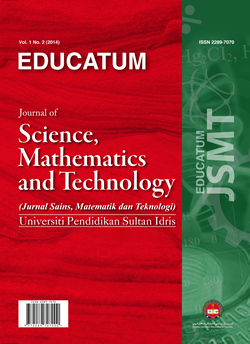Determination of heavy metals concentration in some sachet water commonly in Abuja Municipal Council, Nigeria
DOI:
https://doi.org/10.37134/ejsmt.vol10.1.4.2023Keywords:
Heavy metals, Atomic Absorption Spectrometer, Contamination factor, Contamination Degree, Pollution Load IndexAbstract
The aim of the study was undertaken to assess heavy metal concentration in some sachet water commonly consumed in Abuja Municipal Council, Nigeria. This was done by measuring heavy metal concentration using Atomic Absorption Spectrometer at the advance chemistry laboratory, Sheda Science and Technology Complex (SHETSCO), FCT, then estimating carcinogenic and non carcinogenic exposure, contamination factor, degree of contamination and pollution load index. The samples were all obtained randomly within Abuja Metropolis. The carcinogenic and non- carcinogenic exposure are far less than 1. The concentration of the heavy metals in sachet water for Cd, Mn, Pb, Cu and Zn are 0.019 mg/l, 0.173 mg/l, 0.219 mg/l, 1.250 mg/l and 0.0760 mg/l respectively. The value of Cd, Pb exceed the recommend standard of 0.01 set by WHO (2008) while the concentration of Mn, Cu and Zn are below the permissible limit of 0.5 mg/l, 2 mg/l and 5 mg/l. The estimated heavy metal risk resulting from exposure to Cd and the estimated concentration of Pb in this study, was higher than the acceptable limit range provided by WHO. This indicates adverse health effects for people who consume sachet water in Abuja municipal council.
Downloads
References
Ajayi O. S & Adesida G. (2009). Radioactivity in some sachet drinking water samples produced in Nigeria. Iran J Radiat Res 7(3),151-158.
Appiah-Opong R, Ofori A, Ofosuhene M, Ofori-Attah E, Nunoo I.S, Gordon, C., Arhinful D.K, Nyarko A.K & Fosu-Mensah. (2021). Heavy metals concentration and pollution index (HPI) in drinking water along the southwest coast Ghana. Applied water science. 11(57), 3-10
Cobbina, S. J., Duwiejuah, A. B., Quansah, R., Obiri, S.& Bakobie, N. (2015). Comparative assessment of heavy metals in drinking water sources in two small-scale mining communities in northern Ghana. International Journal of Environmental Research and Public Health, 12(9), 10620-10634.
Duru CE, Okoro IP, Enyoh CE (2017). Quality assessment of borehole water within Orji mechanic village using pollution and contamination models. International Journal of Chemistry, Material and Environmental Research.;4:123–13.
Emmanuel, E., Pierre, M. G. & Perrodin, Y. (2009). Groundwater contamination by microbiological and chemical substances released from hospital wastewater: Health risk assessment for drinking water consumers. Environment International, 35(4), 718-726.
Emumejaye K. (2014). Heavy and trace metals in some brands of rice consumed in Delta state, Nigeria. IOSR Journal of Applied Physics. 6(2): 01 – 05
Hakanson L (1980). An ecological risk index for aquatic pollution control, a sedimento-logical approach. Water Research. 14:975–1001.
Izah SC, Bassey SE, Ohimain EI (2017). Assessment of pollution load indices of heavy metals in cassava mill effluents contaminated soil: A case study of small-scale processors in a rural community in the Niger Delta, Nigeria. Bioscience Methods. 8(1):1-17.
Muhammad, S., Shah, M. T. & Khan, S. (2011). Health risk assessment of heavy metals and their source apportionment in drinking water of Kohistan region, northern Pakistan. Microchemical journal, 98(2), 334-343.
Romero, F. M., Armienta, M. A. & Carrillo-Chavez, A. (2004). Arsenic sorption by carbonate-rich aquifer material, a control on arsenic mobility at Zimapan, Mexico. Archives of environmental contamination and toxicology, 47(1), 1-13.
Singovszka E., Balintova M., Holub M. (2014) Assessment of Heavy metals concentration in sediments by potential ecological risk index. Journal of the polish Mineral Engineering Society. 1: 137 -149
Umoren IU, Onianum PC (2005) Concentration and distribution of heavy metals in urban soils of Ibadan, Nigeria Park. J Ind Res 48:297–401
WHO (2008). Guidelines for drinking-water 4th edition incorporating the first addendum
Downloads
Published
How to Cite
Issue
Section
License
Copyright (c) 2023 Olugbenga Abejide, Umar Ibrahim, Yusuf S. D

This work is licensed under a Creative Commons Attribution-NonCommercial-ShareAlike 4.0 International License.





